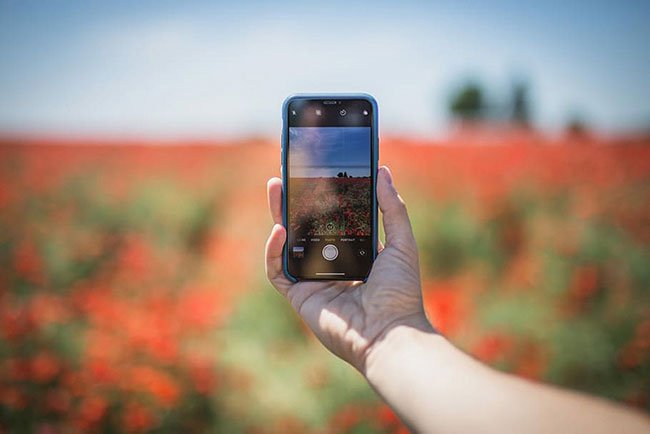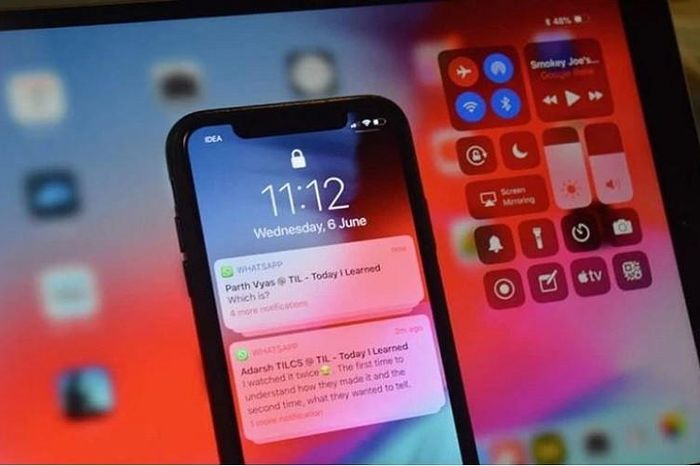What is Nit screen brightness?
If you're looking to buy a monitor, you've probably heard of a nit unit, which indicates how much light per square meter the monitor can emit. Nit is important if you plan to use your device outdoors often, but this is just one of many elements of a high quality display.
Calenda, Nit and Lumen
Imagine you have a candle inside a cube with a total surface area of 1m x 1m (the equivalent of a towel or 20 iPads arranged in squares). The total amount of light emitted from that candle at the source is called a candela.

All light hitting the sides of the cube is equivalent to 1 nit, technically 1 candela / m². Each additional candle you add to the block adds another candela, and at the same time adds 1 nit. If 400 candles / nit are added to the block before it burns, the light per square meter will be 400 nit, creating a pretty nice laptop screen.
Because this is a measurement unit per square meter, screen size and nit are not related to each other. Cinema screens, used exclusively in dark environments, are typically around 50 nit, while smartphones, which use a lot of outdoors, tend to be at least 300 - 400 nit.
Theater projectors can emit more light (measured in lumens) than any smartphone, but the phone will capture more light in a small space. The reason why using a phone in a movie theater is so taboo is because at least 10 times more candela per square meter than a screen, the phone is basically a magnesium fire in a dark theater.
Can be summarized as follows:
- Candela = Light from a candle
- Nit = Light from 1 candle per square meter
- More nit = More candles per square meter = The screen is brighter
Nits good for what?
If you've ever tried using a dimming device on a sunny day, you'll understand why nit is important. The screen needs to be brighter than the surrounding light sources so you can clearly read the information on it.
Unless that device is an HDR (High Dynamic Range) TV. These TVs can show better brightness and more realistic black. One Sony's prototype HDR TV was able to hit 10,000 nit, while most HDR models only reached a maximum of about 2,000 nit.

How much nitrate does your laptop / smartphone / TV need?
As a general rule, the more nit is better. As long as you don't maximize the brightness when you don't need it, it won't have a negative effect on the battery.
Here is the maximum number of nit you can get on popular devices:
- Smartphone / tablet: 200 to 1000+ nit
- Laptop / monitor: 200 to 600+ nit
- TV: 100 to 2000+ nit
Nit is very important but not the deciding factor in screen selection, unless you specifically need something on a certain level of brightness to use HDR or outdoors.
You should read it
- Adjust screen brightness of Windows 7 on PC, laptop
- How to adjust the screen brightness of Windows 10 on the desktop
- Top 5 best screen brightness control apps on Android
- Tutorial 4 ways to adjust the screen brightness of Windows 10
- Manual manual and automatic computer screen brightness adjustment
- How to adjust the screen brightness on Windows 10 Laptop
- How to adjust the brightness of the Laptop computer screen
- How to adjust screen brightness from Terminal in macOS
May be interested
- How to disable automatic screen brightness adjustment on Android
 the presence of a light sensor system has helped the screen on android phones to automatically adjust the brightness to match your surroundings.
the presence of a light sensor system has helped the screen on android phones to automatically adjust the brightness to match your surroundings. - How to adjust screen brightness from Terminal in macOS
 changing the screen brightness on a mac is easy. all macs have two dedicated fn keys designated to reduce or increase screen brightness.
changing the screen brightness on a mac is easy. all macs have two dedicated fn keys designated to reduce or increase screen brightness. - 3 easy ways to adjust iPhone screen brightness that only takes a few seconds
 adjusting iphone screen brightness is a basic skill that users should know. the article below will guide you through 3 ways to adjust iphone screen brightness to help you protect your eyes when the screen is too bright or too dark to suit the surrounding environment.
adjusting iphone screen brightness is a basic skill that users should know. the article below will guide you through 3 ways to adjust iphone screen brightness to help you protect your eyes when the screen is too bright or too dark to suit the surrounding environment. - How to reduce iPhone screen brightness to lower than the iOS limit allows, help reduce eye strain
 if you use the iphone a lot at night, and though you have enabled the night shift feature, your eyes still get tired when you look at the screen a lot. fortunately, you can still adjust the iphone settings to reduce screen brightness to below the ios limit allowed.
if you use the iphone a lot at night, and though you have enabled the night shift feature, your eyes still get tired when you look at the screen a lot. fortunately, you can still adjust the iphone settings to reduce screen brightness to below the ios limit allowed. - Steps to turn off the Windows 10 screen brightness auto-adjust feature
 you want to set the computer screen to a certain brightness, but the computer constantly changing brightness annoys you. click to see how to turn off the windows screen brightness adjustment feature!
you want to set the computer screen to a certain brightness, but the computer constantly changing brightness annoys you. click to see how to turn off the windows screen brightness adjustment feature! - Error not adjusting screen brightness after upgrading Windows 8.1
 after upgrading to windows 8.1, many users encounter errors that cannot adjust screen brightness. although every method has been applied to fix the error, it still fails. so how to fix this error, please refer to the following article of network administrator.
after upgrading to windows 8.1, many users encounter errors that cannot adjust screen brightness. although every method has been applied to fix the error, it still fails. so how to fix this error, please refer to the following article of network administrator. - These software change the brightness, contrast the most effective computer screen
 here are the software to change the brightness, screen contrast, allowing users to change colors on their computer screens to match the surrounding lighting conditions to help display the content clearly. more and better eye protection.
here are the software to change the brightness, screen contrast, allowing users to change colors on their computer screens to match the surrounding lighting conditions to help display the content clearly. more and better eye protection. - How to adjust the brightness of the Laptop computer screen
 how to adjust the brightness of the laptop computer screen. adjusting the computer screen brightness appropriately helps your eyes reduce stress and pressure when using the computer for a long time. on the desktop (desktop) using a separate screen want to adjust the brightness, we manipulate
how to adjust the brightness of the laptop computer screen. adjusting the computer screen brightness appropriately helps your eyes reduce stress and pressure when using the computer for a long time. on the desktop (desktop) using a separate screen want to adjust the brightness, we manipulate - 15 ways to adjust the brightness of computer and laptop screens
 in this article you will learn 12 ways to adjust windows 10 screen brightness to help get the right screen brightness to protect your eyes as well as extend the life of your pc, laptop screen and laptop battery.
in this article you will learn 12 ways to adjust windows 10 screen brightness to help get the right screen brightness to protect your eyes as well as extend the life of your pc, laptop screen and laptop battery. - Fixed an issue where the laptop screen brightness could not be adjusted
 if you are using a windows-based laptop and are experiencing an error that cannot adjust the screen brightness, do not worry too much or rush to the repair shop but try all of these. the following way.
if you are using a windows-based laptop and are experiencing an error that cannot adjust the screen brightness, do not worry too much or rush to the repair shop but try all of these. the following way.










 What is the Random Data method?
What is the Random Data method? What is HDMI eARC?
What is HDMI eARC? What is PopSocket? 6 reasons why you should buy PopSocket
What is PopSocket? 6 reasons why you should buy PopSocket What is BAK file? How to open and convert BAK files
What is BAK file? How to open and convert BAK files What is an LDIF file?
What is an LDIF file? Should we use Wacom or Huion drawing board?
Should we use Wacom or Huion drawing board?